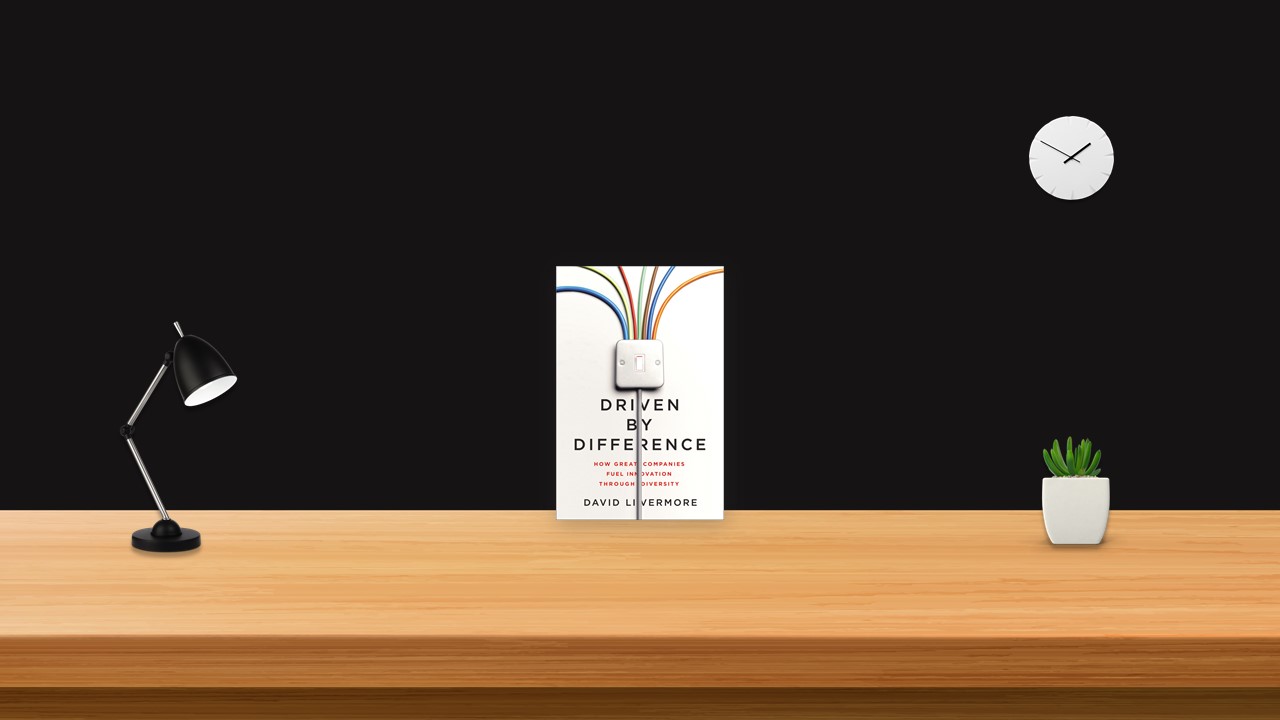The Power of Attention
Is innovation nurture or nature? There may well be certain individuals who possess a unique capacity to think creatively and go beyond the norm. But all of us and our teams and organizations can become far more creative simply by becoming more conscious of innovation. Every time you make a decision, stop and ask yourself whether there’s another way. If you lead an organization or team, create a culture that continually asks for a third solution rather than picking between either/or choices. Tap the brain’s ability to see things in a new light and you’ll be amazed how much more creative the results are, simply by spending more time consciously looking for alternative solutions.
And when you can’t fathom why someone has just said or done what he did, remember that the spotlight of his attention is directed elsewhere. And that leads us to the next vital component of building a climate for culturally intelligent innovation: perspective taking.
The Power of Perspective Taking
When you understand others’ perspectives, you gain entirely new insights into what motivates them. Perspective taking is the bedrock of any good relationship because with it, you stop to consider what will cause the other person to feel understood. And it’s at the core of culturally intelligent innovation. Perspective taking has been proven to be one of the recurring variables found among diverse teams that come up with and implement more creative ideas.
Sadly, too many organizations and leaders operate with the implicit mindset “When I want your opinion, I’ll give it to you.” It’s dangerous for any innovative team to assume they know what the user wants, but that’s particularly true when the users come from a diversity of backgrounds.
Use the empty chair strategy and the diversity of perspectives on your team to understand what people are thinking and the pain points they wish to overcome. Then, you’ll be well on your way to developing a climate for innovation that offers better solutions.
The Power of Trust
Many organizations spend a lot of money to bring in consultants and facilitators to guide an innovative process of brainstorming and strategic planning. But there’s little the best facilitators can do for you if the team members don’t trust each other. Culturally intelligent innovation comes from a climate of trust where differences are perceived as an asset rather than a liability.
Trust begins with a spirit of positive intent. When encountering behavior that seems out of the ordinary or potentially untrustworthy, start with assuming the best and seeking to understand what’s behind the behavior. There will be times when it becomes clear that we shouldn’t trust someone. There are some individuals who are unreliable and incompetent and whose intentions cannot be trusted. But we need to arrive at that judgment carefully, particularly when cultural differences are involved.
The 5D Process for Culturally Intelligent Innovation
Once the climate is in place, you need to manage the process for culturally intelligent innovation. This process includes the steps covered in many innovation books (e.g., define, ideate, test), but we’ll look at how to adjust these steps for a diversity of participants and users.
#1 Define: Align Diverse Expectations and Goals
Judith Orasanu, a psychologist at NASA, studied the communication strategies used by airline pilots in the cockpit, a place consistently characterized by cultural diversity. She found that the best crews have prepared to cope with emergencies by developing a shared mental model during periods of low workload and stress. Then, during times of high workload, stress, and potential danger, the pilots implicitly draw upon their previously established mental model to guide what they do. The extent to which crews had clear mental models and ground rules for working together, the more effectively they performed under stress. Teams that did not have a shared mental model performed less effectively.
High-performing teams communicate less during intense, high workload times than low-performing teams do. That’s because they’re relying upon an implicit coordination that emerged at the beginning during times of low stress. Think about a sports team. During a game, most teams don’t have much time to explicitly discuss their strategy. And the closer the game gets to the end, the higher the stress, particularly if the score is close and it’s a significant game. But the team is unlikely to be successful without some regular strategy sessions to lay out expectations, individual responsibilities, and a plan.
When working with a homogenous group, a shared mental model often exists implicitly. It’s valuable to spend time defining the expectations and understandings shared across any group before engaging in the innovation process. But taking the time to create a shared mental model and define your goal is a nonnegotiable for a diverse team.
#2 Dream: Generate Diverse Ideas
Several years ago, P&G and Google traded 20 staff members for a few weeks to benefit from the different perspectives they could offer and gain because both companies know that diversity is a treasure to be mined for truly innovative solutions.
Diversity offers one of the greatest challenges and opportunities for generating new ideas. Once a team has generated a diverse set of ideas, the next step is to decide which idea to pursue and how to get others on board—step 3 of the 5D process.
#3 Decide: Select and Sell Your Idea
Technology offers more opportunities than ever before to get ideas in front of a global audience. It also means there’s never been more competition for the countless ideas out there. A crucial part of culturally intelligent innovation is selecting the best idea and getting others to support it. That leads us to the next crucial stage in the process—design and testing. What does a culturally intelligent approach to innovation do that’s unique with this familiar phase of innovation?
#4 Design: Create and Test for Diverse Users
Most people need to tangibly experience an innovation to be able to provide input on it. And you’ll be better able to anticipate the many variables of executing the innovation long-term by having taken the time to develop and test a prototype. The process of the design is as important as the response you get from it. The time you spent defining a shared mental model will pay off when you get to this stage in the process. You’ll need to continually revisit the shared mental model to address the inevitable conflicts and setbacks that will occur.
If during testing you find that users are focused primarily on one part of your innovation, consider scrapping the rest of it and focus on that. Some businesses that fumble have one small segment that really works but are unwilling to let go of the other segments that don’t. You have limited time and resources, so channel your energy around what works best for your users.
As you design and test your idea, keep it simple and listen to the feedback you receive. There’s nothing more valuable than learning from how people respond to your innovation.
#5 Deliver: Implement Global Solutions
A team matures from being a bold disrupter to becoming a more well-established part of the organization, there’s a danger that it will lose some of its innovative power. There’s a need for systems, processes, policies, etc., to drive efficiency and sustainability. On the other hand, the very systems and processes set up to implement innovation can run in conflict with remaining innovative. Before you know it, a good day at the office is one where everyone is working hard and checking off their to-do lists and emptying their email inbox rather than solving real problems and creating value. The challenge for leaders is to retain a founder’s entrepreneurial mentality, which includes a bias toward action, a long-term vision, an obsession with customers and frontline operations, and an aversion to bureaucracy.
We need look no further than our personal lives to be reminded of many great ideas that never go anywhere. Productive teams generate far more ideas than they should pursue. Dreaming up new ideas is the fun part. But exercising the discipline to develop a plan and follow it through to completion is the only way an idea actually goes anywhere. The satisfaction of seeing an innovation implemented is a great payoff for all the hard work.


